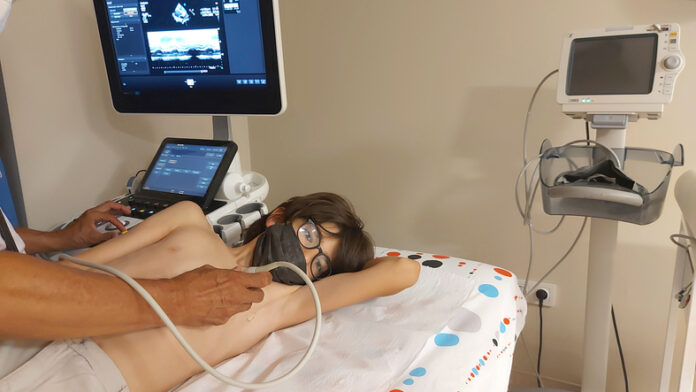
An eye-opening study estimates 10.5 million Americans—nearly five percent of the population—have atrial fibrillation (A-Fib), a dangerous but highly treatable arrhythmia. The new report from researchers at University of California, San Francisco (UCSF) is the first national estimate of the condition in two decades. Earlier projections had estimated that only about 3.3 million U.S. adults had the condition.
The study appeared Sept. 11 in JACC. The first author is Jean Jacques Noubiap, MD, PhD, a postdoctoral scholar at UCSF with a specialty in global cardiovascular health.
Atrial fibrillation is a rapid, irregular heartbeat that can lead to stroke or sudden death. It has been on the rise for at least the past decade, driven by the aging of the population, along with increasing rates of hypertension, diabetes, and obesity. Studies have shown that people with AFib are up to five times more likely to have a stroke.
“Atrial fibrillation doubles the risk of mortality, is one of the most common causes of stroke, increases risks of heart failure, myocardial infarction, chronic kidney disease and dementia, and results in lower quality of life,” said Noubiap. “Fortunately, atrial fibrillation is preventable, and early detection and appropriate treatment can substantially reduce its adverse outcomes,” he added.
AFib is treated with lifestyle changes, such as weight loss, medicines, and procedures, including surgery, to help prevent blood clots, slow the heartbeat, or restore the heart’s normal rhythm.
For this study, the UCSF investigators reviewed the medical records of nearly 30 million adult patients who received some form of acute or procedural care in California from 2005–2019. About two million of these people had been diagnosed with AFib, and rate increased over time, rising from 4.49% of the patients treated between 2005 and 2009 to 6.82% of the patients treated between 2015 and 2019.
The data were standardized to reflect the entire country, and researchers estimated the current national prevalence to be at least 10.55 million. They also found that during the study timeframe, AFib patients skewed younger, were less likely to be female, and more likely to have hypertension and diabetes.
AFib complications include shortness of breath, lightheadedness, blood clots, stroke and even heart failure. The authors said that these new prevalence estimates can help guide health care planning, resource allocation, and public health interventions.
“Physicians recognize that atrial fibrillation is often encountered in essentially every field of practice,” said senior and corresponding author Gregory M. Marcus, MD, a cardiologist and electrophysiologist at UCSF Health. “These data provide objective evidence to demonstrate that prior projections severely underestimated how common it truly is.”
Digital technologies, the researchers say, may reveal AFib is even more common than the current analysis indicates.
“With the growing use of consumer wearables designed to detect atrial fibrillation combined with safer and more effective means to treat it, this current prevalence of atrial fibrillation in health care settings may soon be dwarfed by future healthcare utilization that will occur due to the disease,” Marcus said.





